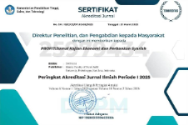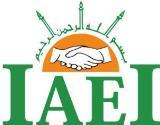Armistead, C. and P. Pettigrew (2004), "Effective Partnerships: Building a Sub-Regional Network of Reflective Practitioners,"International Journal of Public Sector Man- agement, 17, 571-585.
Bagchi, P.K. and S.K. Paik (2001), "The Role of Public-Private Partnership in Port Infor- mation Systems Development," International Journal of Public Sector Manage- ment, 14(6), 482-499.
Djabbari, M. H., Alwi, A., & Thamrin, S. H. (2021). Implementasi Public Private Partnership dalam Pengembangan Pariwisata di Kabupaten Toraja Utara. JAKPP (Jurnal Analisis Kebijakan & Pelayanan Publik), 1-13.
Gibson, H. and B. Davies (2008), “The Impact of Public Private Partnerships on Educa- tion: A Case Study of Sewell Group Plc. and Victoria Dock Primary School,” Inter- national Journal of Educational Management, 22(1), 74-89.
Jamali, D. (2004), “Success and Failure Mechanisms of Public Private Partnerships (PPPs) in Developing Countries: Insight from the Lebanese Context,” International Jour- nal of Public Sector Management, 17(4/5), 414-430.
Kumorotomo, W. (1999), “Business Partnership as an Alternative in the Empowerment of the Public Sector in Region,” Sociopolitical Journal, 3(1), 80-108.
Lee, S. (2010), “Development of Public Private Partnership (PPP) Projects in the Chinese Water Sector,” Water Resource Management, 24, 1925-1945.
Ni’mah, I. (2018). Public-Private Partnership untuk Meningkatkan Pertumbuhan Ekonomi Sektor Pariwisata di Wilayah Kedungsepur. Economics Development Analysis Journal, 5(4), 410-425.
Runde, D. (2006), “How to Make Development Partnership Work,” OECD Observer, 255, 29-31.
Soekamto, H., R. Soeprapto and I. Noor (2004), “The Community Participation in Over- coming of Poverty,” Scientific Journal of Public Administration, 4, 1-16.
Stiglitz, J.E. (2002), “Partcipation and Development: Perspectives from the Comprehen- sive Development Paradigm,” Review of Development Economics, 6(2), 163-182.
Supriyadi (1999), “Effect of Implementation of Rural Development Programme to the Community Participation,” Journal of Management and Accounting, 11(2), 152-165.
Syahza, A. (2007), “Accelerating the Economic Empowerment of Rural Communities with Model Agroestate Based-Palm Oil,” Economic Journal, 12(1), 126-139.
Thuen, F. and K.T. Laerum (2005), “A Public/Private Partnership in Offering Relation Education to the Norwegian Population,” Family Process, 44(2),175-85.
World Bank (1999), Working together for a Change: Government, Business and Civil Partnerships for Poverty Reduction in Latin America and the Caribbean, EDI Learning Resources Series, The World Bank, Washington D.C.

 (Universitas Islam Negeri Maulana Malik Ibrahim, Malang)
(Universitas Islam Negeri Maulana Malik Ibrahim, Malang) 




.jpg)



